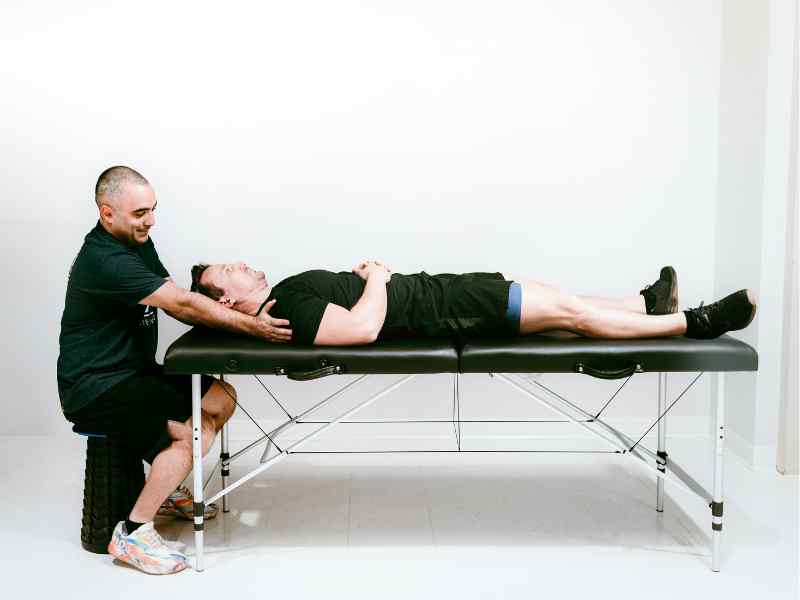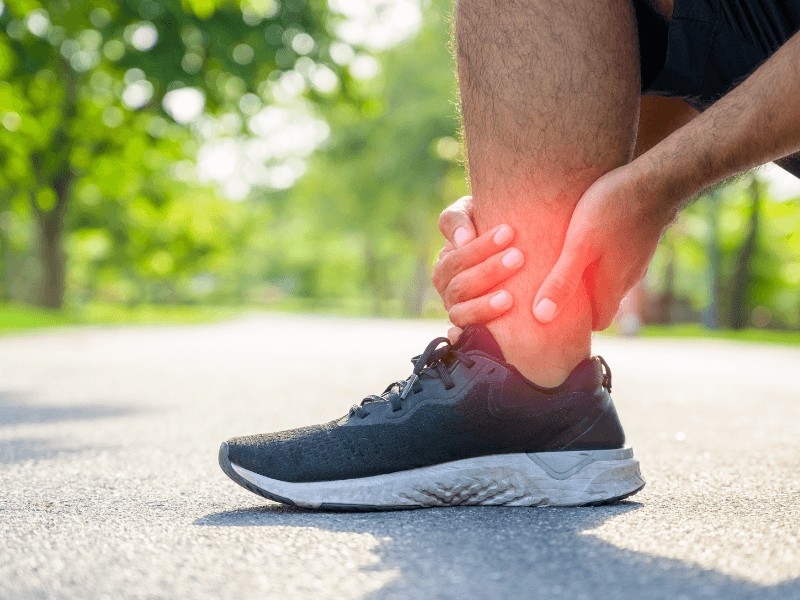Lateral Epicondylitis: Overcoming Tennis Elbow
Lateral Epicondylitis, more commonly known as “Tennis Elbow” is a commonly misunderstood condition which affects individuals far beyond those participating in tennis, as the name may suggest. Tennis elbow is characterized by pain along the outside portion of the elbow and forearm. Understanding this condition is crucial, not only because of its prevalence, but also due to its potential impact on daily activities and quality of life.
Recent studies suggest that tennis elbow affects 1-3% of adults annually, men greater than women, and affects those primarily between 40-59 years of age, respectively (1). It primarily affects those who engage in activities which require repetitive motions of the wrist and elbow and repetitive gripping activities. What makes tennis elbow noteworthy, however, is that without appropriate treatment, tennis elbow can progress to a chronic condition with one study indicating 54% and 55% of the participants demonstrated continued symptoms and functional restrictions after 2 years (2).
This article aims to provide clarity on tennis elbow, offering a clear understanding of the structures involved, symptoms, and most importantly, the various treatment strategies. We will dive into how physical therapy plays a pivotal role in managing and recovering from this condition. By the end of this read, you’ll have a comprehensive understanding of tennis elbow and be equipped with knowledge on how to effectively approach its treatment. Whether you’re experiencing tennis elbow pain or are interested in preventive strategies, this article will serve as a valuable guide in your journey towards better elbow health.
What is Tennis Elbow?
Tennis elbow is a condition that can significantly affect an individual’s quality of life and physical functionality. This condition occurs when the wrist extensor tendons, most commonly the Extensor Carpi Radialis Brevis (ECRB), becomes irritated at its tendinous attachment (micro-trauma) at the lateral elbow, also known as lateral epicondyle. Repetitive & gripping activities of the wrist and forearm are commonly the culprit, as we over-stress the muscles in our forearm. Weekend home projects with repetitive motions are a great example of something which can spur this injury! Additional activities in our lives that can become painful once irritation has occurred include using a hammer/screwdriver, opening jars, holding plates/mugs, typing on a computer, and gym activities.
Furthermore, tennis elbow can lead to progressively increased compensatory movement patterns which increases the risk of injury to the body (i.e. wrist, shoulder, opposite arm.) Without proper treatment, tennis elbow can escalate into a chronic issue, including the deterioration of tendons, potentially resulting in the need for surgical intervention, if left untreated. Thus, understanding and addressing tennis elbow, promptly, is vital to maintaining shoulder health and overall physical well-being.
Symptoms of Tennis Elbow
Recognizing the symptoms of tennis elbow is a critical step towards seeking appropriate care and treatment. Symptoms typically start gradually, fading away when the activity is stopped, but can become more persistent and less fleeting with continued overuse and lack of treatment. While the symptoms of tennis elbow can be pretty specific, it’s important to remember that a definitive diagnosis should always be made by a healthcare professional like a MovementX physical therapist.
Here is a comprehensive list of symptoms frequently associated with tennis elbow:
- Pain and Tenderness: One of the most common symptoms is dull or sharp pain along the outside of the elbow, with pinpoint tenderness along the lateral epicondyle (bony prominence on the outside of the elbow.)
- Tenderness/soreness may also be present along the forearm muscles on the top of the forearm. These muscles are responsible for lifting(extending) the wrist/hand.
- This pain may intensify with gripping activities, actively holding items with weight in the hand (full cup of coffee, jar, etc.), or repetitive motions of the wrist and elbow.
- Reduced Range of Motion: Individuals may notice a decrease in their ability to comfortably bend and straighten the elbow, and with specific wrist motions such as wrist extension (rotating your hand up like your using the gas on a motorcycle, or wrist supination (rotating your forearm so the palm is facing up).
- Weakness in the Hand/Wrist: There might be a noticeable weakness with gripping activities, making it difficult to perform everyday tasks that require lifting, carrying, or holding activities.
- Pain or Stiffness When Moving the Elbow: Pain & stiffness is often experienced when attempting to straighten or bend the elbow after prolonged positioning such as when working on a computer for a prolonged period or after waking up in the morning.
- Night Pain: Tennis elbow can sometimes lead to discomfort or pain when sleeping, particularly when lying on the affected side.
- Radiating Pain: In some cases, the pain may radiate from the elbow down the top of the arm, towards the wrist. It may also, in some cases, radiate up from the wrist area to the outside of the elbow, where the muscles insert.
Remember, these symptoms can sometimes be indicative of other conditions, and not everyone with tennis elbow will experience all of these symptoms. Early consultation with a healthcare provider is key to proper diagnosis and effective management of the condition.
Causes of Tennis Elbow
While the exact cause of tennis elbow can vary from individual to individual, there are several common risk factors and conditions frequently associated with its development. It’s important to note that these factors are not direct causes but can potentially increase the likelihood of experiencing tennis elbow. Understanding these risk factors can be crucial in both prevention and management of the condition.
- Repetitive Activities of the hand/wrist/elbow: Engaging in activities or sports that involve repetitive gripping and/or repetitive wrist/elbow motion, such as, tennis/racket sports, using hand tools, or activities which require significant gripping such as weight-lifting.
- Age-Related Changes: As we age, our risk of tennis elbow may increase. This is often due to age-related wear and tear of the wrist/hand extension muscle tendons.
- Muscle Weakness or Imbalance: Weakness or imbalance in the middle back, shoulder, and forearm muscles, particularly the rotator cuff and the muscles that stabilize the scapula, can contribute to tennis elbow. When the muscles of the upper back and shoulder are not properly being utilized, it places an undue amount of stress and strain on the forearm muscles to “pick up the slack” and assist with the activities using the arm.
- Bone Spurs: Sometimes, bone spurs or overgrowths in the elbow area, can rub on the muscle and tendons of the elbow, leading to pain.
- Trauma or Injury: A history of elbow/shoulder trauma or injury, such as a fall or a sudden impact, can initiate a cascade of events that result in tennis elbow.
- Occupational Hazards: Occupations that require repetitive or extensive use of the wrist and hand (i.e. plumbers, roofers, electricians, & mechanics) can increase the likelihood of developing tennis elbow
It is important to remember that these factors can vary widely in their impact and do not guarantee the development of tennis elbow. They provide a framework for understanding potential contributors to the condition, allowing for better preventive and treatment strategies.
Treatment Options for Tennis Elbow
Effectively managing tennis elbow often involves a multi-faceted approach, tailored to your specific needs and the severity of their condition. Here are various treatment options that are commonly employed:
- Physical Therapy: Physical therapy is the cornerstone of treatment for tennis elbow. It focuses on exercises to strengthen the shoulder, decrease soft-tissue restrictions, and correct the muscle imbalances present in the back, shoulder, and wrist. Physical therapists who treat tennis elbow may also use techniques like manual therapy, dry needling, or electrical stimulation to reduce pain and inflammation.
- Medication: Over-the-counter pain relievers and anti-inflammatory medications, such as ibuprofen or naproxen, may sometimes help reduce pain and swelling. We recommend talking with your physician before starting any medication regimen.
- Corticosteroid Injections: For more severe cases, corticosteroid injections into the elbow can provide relief from pain and inflammation. However, these are typically used sparingly, as overuse can weaken tendons in the elbow.
- Ice and Heat Therapy: Applying an ice pack to the elbow and forearm can help reduce swelling and pain, particularly after activity. Heat therapy can also be beneficial, especially for relaxing tight muscles around the elbow and forearm & potentially providing improved pain levels with wrist movements.
- Alternative Therapies: Some individuals find relief through alternative therapies such as acupuncture or chiropractic care. These should be considered supplementary to more traditional treatments.
It’s important to note that the choice of treatment should be based on individual assessment and consultation with healthcare professionals. Among these options, physical therapy plays a particularly vital role, not only in alleviating symptoms but also in addressing the underlying causes of tennis elbow. This can help prevent future episodes and improve overall elbow/wrist health. In the following section, we’ll explore in more depth the benefits and specific strategies used in physical therapy for treating tennis elbow.
How Physical Therapy can help with Tennis Elbow
Physical therapy can play a pivotal role in the management and treatment of tennis elbow, offering a personalized and holistic approach to recovery. Working with a skilled MovementX physical therapist can significantly improve outcomes, not only by alleviating symptoms, but also by addressing the root causes of the condition.
One of the key aspects of physical therapy is the application of a uniquely tailored exercise program, based on the clients specific needs and lifestyle. This program will particularly focus on strengthening the stabilizers of the arm, namely the scapular stabilizers and rotator cuff muscles.
Beyond exercise, physical therapists employ various hands-on techniques to reduce pain and inflammation. This may involve manual therapy, where the therapist uses their hands to mobilize the muscles of the forearm and the elbow joints, directly, to help alleviate pain and improve function. Additional treatment including dry needling, taping, and cupping can assist with providing pain relief, restoring normal muscle tissue tone, and improving overall function.
Education is another critical component of physical therapy for tennis elbow. Physical therapists work with patients to understand their condition and how various activities or lifestyle factors might impact their symptoms. This includes advice on posture correction, activity modification at work or home, and strategies to avoid movements that might exacerbate the condition. By empowering patients with this knowledge, physical therapy not only addresses the current episode of tennis elbow, but also equips individuals with the tools needed to prevent future occurrences.
Our Top Exercises & Stretches for Tennis Elbow
1 — Wrist Flexion Stretch
- While sitting with good posture, and your arm fully extended in front of you, slowly flex the top of your hand down so that you feel a gentle stretch across the top of the forearm.
- Hold for 30 seconds and relax.
- Repeat stretch 3 times and perform 3 times per day.
2 — Scapular Retractions
- While sitting with good posture, slowly pull your shoulder blades back and slightly down, trying to make them touch in the middle of your back.
- Hold for 1-2 seconds and relax, letting your shoulders come back forward.
- Perform 2-3 sets of 10-15 repetitions, ensuring the movement is controlled and limiting your shoulders from “hiking” up towards your ears.
3 — Wrist Extension with Light Weight
- Sit at the edge of a table with your forearm supported and your wrist hanging off the edge, palm down (unsupported), & knuckles pointing towards the ground.
- Holding a very light can (6 oz. to start), slowly rotate your wrist up, so that your palm faces forward. Keep this in a pain-free range of motion.
- Slowly let your wrist bend back down to the start position (Knuckles pointed towards the ground)
- Perform 2-3 sets of 8-10 repetitions, ensuring the movement is controlled and within a pain-free range of motion.
Disclaimer: While these three exercises can be effective for managing tennis elbow, it’s crucial to consult with a MovementX physical therapist before starting any exercise program. A licensed therapist can provide a personalized assessment and ensure that the exercises are appropriate for your specific condition and fitness level. Remember, each individual’s case is unique, and what works for one person may not be suitable for another.
Prevention of Tennis Elbow
Preventing tennis elbow involves a combination of lifestyle modifications, exercise routines, and awareness of body mechanics. Here are some actionable tips and strategies that can help reduce the risk of developing tennis elbow or prevent its recurrence:
- Strengthen Muscles: Incorporating exercises that strengthen the rotator cuff, scapular stabilizer muscles, and forearm muscles can help support the arm for repetitive activities. Stronger muscles provide better joint stability, reducing the likelihood of irritation at the elbow.
- Improve Posture: Good posture plays an important role in preventing tennis elbow. Whether it’s work or home activities, setting up your environment to allow for good posture and using the proper tools at your disposal can help to reduce the strain on the forearm muscles and tendons.
- Gradual exposure to new activities: When starting new work, hobbies, or activities that require repetitive movements (using a hammer/screwdriver, tennis, pickleball, new gym activities) it is imperative that you gradually increase your tolerance to these activities to avoid irritation to the elbow and forearm muscles.
- Warm-Up Before Exercise: Always warm up properly before exercise or sports to prepare your muscles and joints. This can include light cardio and dynamic stretching.
- Listen to Your Body: Pay attention to your body’s signals. If you start experiencing elbow/forearm/gripping pain or discomfort, don’t ignore it. Early intervention can prevent a minor issue from becoming a more serious problem.
By incorporating these preventative strategies into your daily life, you can significantly reduce the risk of tennis elbow. Remember, prevention is often the best treatment.
Conclusion
As we’ve explored the complexities of tennis elbow, it’s clear that this condition can significantly impact your daily life and activities, beyond playing tennis! But remember, understanding and addressing tennis elbow is the first step towards recovery and regaining your strength, decreasing pain, and recapturing your life.
I’ll leave you with this; Picture your day-to-day routine—do you find yourself avoiding certain activities or using your arms differently because of a persistent ache in your elbow? Have you noticed a gradual loss of strength or an increase in discomfort when gripping objects? These could be early signs of tennis elbow. Don’t let it progress. Seeking professional guidance can make a substantial difference in your recovery journey.
At MovementX, we’re dedicated to helping you move better and live a life free of pain. Our skilled physical therapists are ready to work with you, offering personalized care that addresses your unique needs. Request a session with MovementX today, and take the first step towards effective treatment and a healthier, more active future!
References
- Degen RM, Conti MS, Camp CL, Altchek DW, Dines JS, Werner BC. Epidemiology and Disease Burden of Lateral Epicondylitis in the USA: Analysis of 85,318 Patients. HSS J. 2018 Feb;14(1):9-14. doi: 10.1007/s11420-017-9559-3. Epub 2017 Jun 5. PMID: 29398988; PMCID: PMC5786580.
- Bretschneider SF, Los FS, Eygendaal D, Kuijer PPFM, van der Molen HF. Work-relatedness of lateral epicondylitis: Systematic review including meta-analysis and GRADE work-relatedness of lateral epicondylitis. Am J Ind Med. 2022 Jan;65(1):41-50. doi: 10.1002/ajim.23303. Epub 2021 Oct 21. PMID: 34674287; PMCID: PMC9297967.
- Buchanan BK, Varacallo M. Lateral Epicondylitis (Tennis Elbow) [Updated 2023 Aug 4]. In: StatPearls [Internet]. Treasure Island (FL): StatPearls Publishing; 2024 Jan-. Available from: https://www.ncbi.nlm.nih.gov/books/NBK431092/
- Ross Witstein, MD, FAAOS, Jocelyn, and Michael J Alaia, MD, FAAOS. “Tennis Elbow (Lateral Epicondylitis) – Orthoinfo – Aaos.” OrthoInfo, orthoinfo.aaos.org/en/diseases–conditions/tennis-elbow-lateral-epicondylitis/. Accessed 21 Aug. 2024.
About the Author
Dr. Romin Ghassemi is a physical therapist in Fuquay-Varina, North Carolina. He specializes in Orthopedic Conditions, Sports Injuries, and Neurological Conditions. Romin Ghassemi utilizes a variety of methods such as hands-on therapy, functional fitness, and mobilization to help you regain your strength, mobility, and vitality. Whether you’re an athlete recovering from an injury or just looking to enhance your overall well-being, he’s here to support you every step of the way!
Share This Page
More Conditions We Treat
Found this page interesting? Learn more about other conditions we treat:





